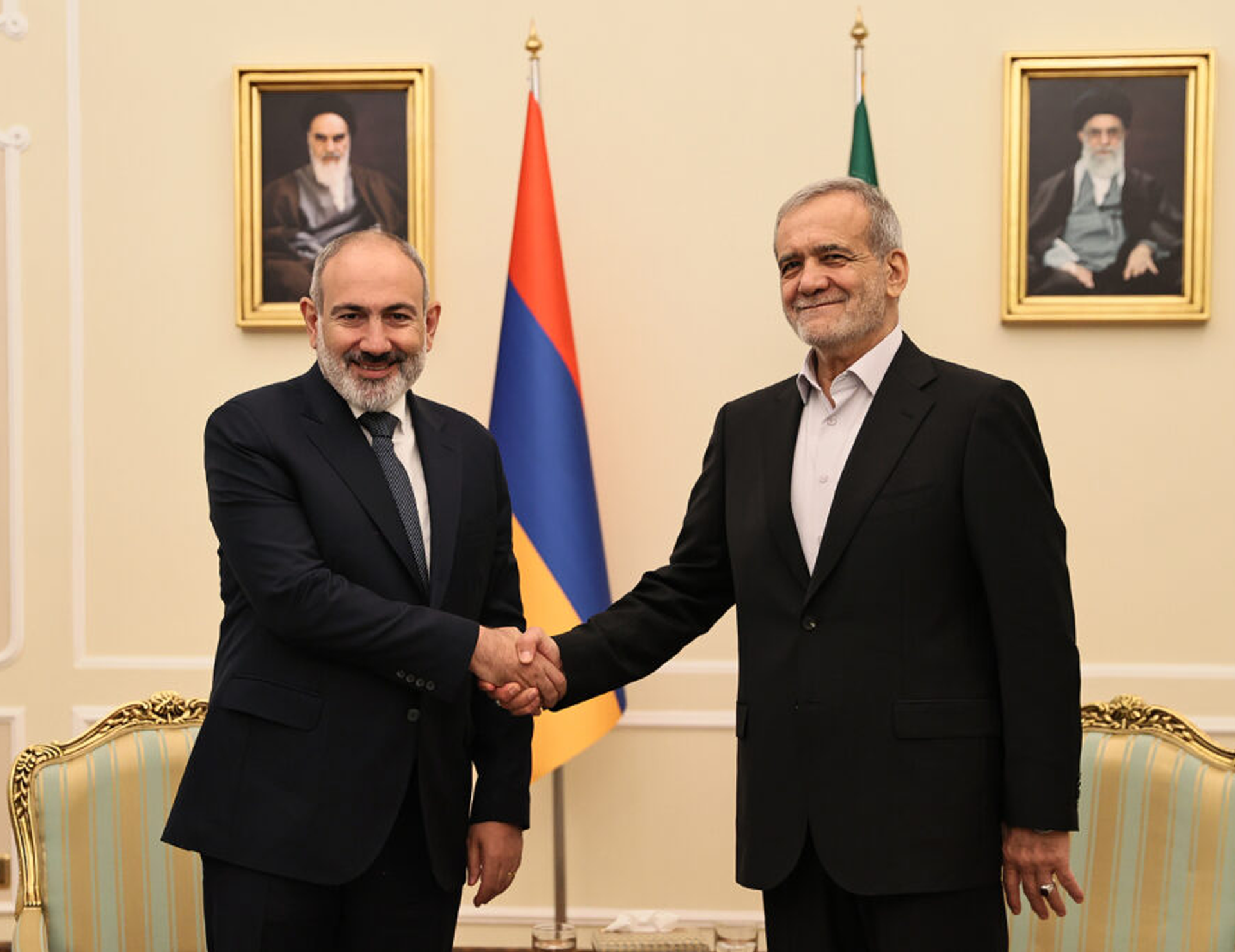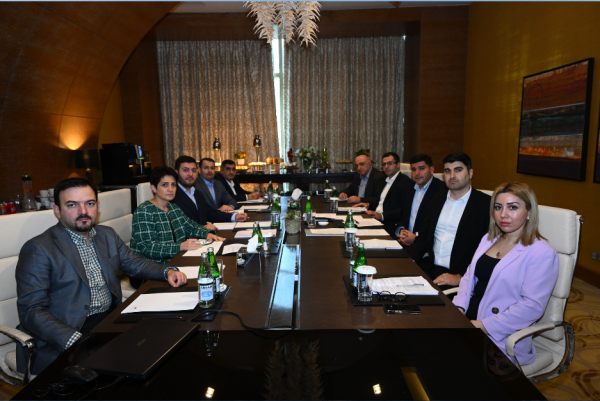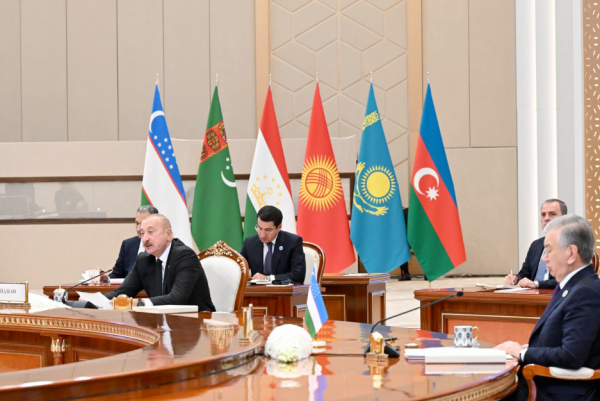Iran-Israel escalations reaffirm the need for Armenia to diversify foreign trade

The June 2025 Iran-Israel escalations, though brief, disrupted Armenia's economic activity on the trade routes passing through Iran, one of its major trade partners. Probability of continuing risks to economic stability and trade have sparked widespread concern in Armenian media and expert circles, surfacing in parallel to the anticipated threats to Armenian security, significantly contingent on Iran's role as a mediator in the region. However, with Iran’s own security increasingly under strain and the possibility of a new conflict with Israel not entirely ruled out, its reliability as a trade partner and stabilizing force is now under question.
With the Armenian parliamentary elections scheduled for next June and Prime Minister Nikol Pashinyan’s ambitions to advance the controversial ‘Real Armenia’ blueprint—where economic prosperity is a central objective—it is imperative for Armenia to address its trade vulnerabilities. This includes diversifying its foreign trade strategies and carefully navigating the current geopolitical landscape that complicates Armenia's path to economic prosperity.
Connectivity
Despite the shared border between Armenia and Iran and existing infrastructure that had facilitated trade for decades, including the Iran-Armenia pipeline that had served as the vessel for Armenia's gas imports, there have been efforts to further enhance connectivity within the region. The most anticipated initiative has been the construction of the North-South Highway, an ambitious transport project designed to bridge Armenia's southern and northern borders. In the south, the highway would link Iran and Armenia, and in the north, Armenia with Georgia, creating access into the Black Sea and subsequently, Europe. However, renewed instability in Iran could pose risks to the construction of the highway and potentially disrupt the movement of goods along the route after it is completed.
Developing geopolitical circumstances hold back potential for economic integration in the region. Currently, Armenia remains isolated from two major economies of the region–Azerbaijan and Turkey. Although the latter have jointly advocated the Zangezur Corridor initiative to facilitate Azerbaijan's land access to its Nakhchivan exclave—simultaneously stressing its potential to strengthen broader regional connectivity—the implementation remains mired with political disputes, namely the conflict between Azerbaijan's resistance to Armenia's state control of the route and Armenia's maintaining that any transit through its territory must respect its sovereignty.
In a similar vein, Crossroads of Peace—an initiative proposed by Armenia in 2023 aimed at boosting Armenia's links with Azerbaijan, Georgia, Iran and Turkey and promoting regional connectivity and cooperation—is contingent on normalization of relations between Armenia, Azerbaijan, and Turkey at a political level. Notably, one of the four principles underpinning the infrastructure project states that each segment of the route should be under the full control of the state through which it passes.
Energy and gas
Energy, particularly gas, is a vital element of the Armenian energy landscape and the country’s international trade profile, with Armenia sourcing nearly all of its supplies from Russia and Iran. By numbers, the distinct strategic weight of the two partnerships is clear: in 2022, Russia supplied over 87% of Armenia's gas, while Iran supplied just above 12%. With Iran specifically, Armenia operates under a unique barter agreement: it imports Iranian gas, converts it into electricity domestically, and then exports that electricity back to Iran at an agreed rate of 3 kilowatt-hours per one cubic meter of gas. The explanation of the imbalance lies in a number of factors that complicate importing gas from Iran, including the fact that Iranian gas is almost twice as expensive as its Russian counterpart and that the Iran-Armenia pipeline poses challenges in gas transportation in the winter. Thus, at present, Armenia will likely remain heavily dependent on Russian gas until the infrastructure is advanced—a scenario for which there are realistic prospects.
Prior to the Iran-Israel escalations, there has been anticipation of increased regional energy cooperation as the Free Trade Agreement (FTA) between Iran and the Eurasia Economic Union (EAEU)—of which Armenia is a member and only one to border Iran—went into effect on May 1, 2025. The comprehensive FTA spans a multitude of economic sectors and promotes liberal trade practices, the most prominent of which is the provision allowing Iran to export the majority of its products to the EAEU member states and import goods from these countries free of tariffs.
The tariff provision posits two major benefits for Armenia. First, Armenia is projected to become a more attractive foreign investment destination, with businesses abroad likely to take advantage of the cost-efficient access to Iranian markets and in turn direct investments into infrastructure and logistics networks in Armenia. The value of this opportunity should be placed in the context of Armenia's domestic affairs; Foreign investment flows into Armenia have become a concern following the government's plan to nationalize Electric Networks of Armenia (ENA)—the country's only electricity distribution operator—after the arrest of Samvel Karapetyan, the owner of the conglomerate that managed it, on charges of publicly calling for the overthrow of the Armenian government. The nationalization not only triggered widespread perception of a threat to the country's democratic legitimacy, but also cast doubt on Armenia's international economic standing and, by extension, its attractiveness to foreign investors.
The FTA tariff provision also held potential as a tool to further boost Armenia-Iran energy trade, but the onset of the Iran-Israel conflict calls that prospect into question. Though the armed conflict had de-escalated, Israel's strikes on Iran have inflicted significant damage to the Shahran fuel and gas depot in Tehran as well as the South Pars gasfield, the world's largest natural gasfield and Iran's source for two-thirds of national gas production. While Armenia does not rely on Iranian gas to the same extent as it does on Russian supplies, a renewed conflict in Iran—particularly one that damages key infrastructure—could still pose serious challenges for Armenia, affecting both its trade turnover and its ability to meet domestic energy needs.
Major trade partners beyond the region
While the FTA heightened expectations of greater connectivity and trade in the region, Armenia has also been managing strategic partnerships well beyond. In April 2025, Armenia and UAE finalized the plan for the construction of a solar power plant in Armenia, set to begin in early 2026. With the investment cost estimated at $174 million, the 500-hectar plant will provide for 7.5% of Armenia's total energy needs, according to government forecasts. UAE is Armenia's second largest trade partner after Russia, and in addition to spearheading grand-scale investment projects, it is also the primary recipient of Armenian gold, which is almost entirely imported from Russia into Armenia, processed, and then re-exported. In 2023 alone, Armenia exported $1.31 billion worth of gold into the UAE. Remarkably, Hong Kong is also a successful example of a major importer of Armenian gold, having imported $472 million the same year.
The re-export trade had accounted for almost half of Armenia's total trade turnover in 2024, but the previously profitable practice had been scaled back significantly, or more specifically, likely strategically sacrificed for geopolitical gain. In 2025, Armenia had reduced its imports of Russian goods, including gold—a decision linked to Russia's changes in EAEU tariff policies, which limited Armenia's ability to continue re-exports at the previous scale, as well as growing distrust in Russia toward the Armenian business sector. This decline in economic relations is closely tied to Armenia's deepening relations with the EU, increasingly evident through its March 2025 approval of legislation that supports EU accession initiatives and the recent political agreement on the text of the EU-Armenia New Partnership Agenda, which includes extensive investments into Armenia's socio-economic development.
A key example of strategic cooperation that had remarkably reduced Armenia's dependence on Russia is its partnership with India, which supplied Armenia with weapons during the 2020 war. While France and Iran also played an important role in arming Armenia, India's contribution was notably larger in scale, having surpassed Russia as Armenia's largest weapons supplier in 2022. Currently, there is only one transportation route for Indian weapons into Armenia, which runs through Iran; during the twelve-day conflict, persistent concerns about the security and reliability of the route underscored and an urgency of exploring alternatives to ensure continuity of Indian arms imports.
Security
While the Iran-Israel escalations exposed a degree of fragility of Armenia's foreign economic strategy, vulnerability of projects like the North-South Highway and the FTA, and the uncertainty of Armenia's future in alliances like the EAEU, these issues are also deeply intertwined with concerns over Armenia's security. During the twelve-day conflict, the Armenian media reflected a degree of anticipation of military intimidation from Azerbaijan and Turkey, aimed at advancing the Zangezur corridor initiative. These concerns—ranging from fears of military coercion to a full-scale attack—were rooted in the belief that the two allies would attempt to exploit Iran's military vulnerability and strategic preoccupation to push forward the initiative on their own terms.
Iran, a long-time opponent of the transportation project and arguably the key actor that has hindered its materialization, holds significant stakes in the Zangezur corridor dispute. Motivated by its economic interests rather than Armenia's security, Tehran posits that the corridor would complicate its only access into the EAEU and European markets, while also undermining a core component of the FTA strategic vision. Essentially, Iran—and, by extension, Armenia—has been facing dual pressure regarding regional trade flow: one from Azerbaijan and Turkey regarding Zangezur corridor and the other from recent confrontation with Israel that had already dealt a blow to Iran's major infrastructure and disrupted regional trade within a span of less than two weeks.
Nonetheless, circumstances surrounding the stalled negotiations appear to be shifting. The five-hour bilateral meeting between Azerbaijani and Armenian leaders in Abu Dhabi signals a firm commitment to finding a resolution, while an alleged plan from Washington to oversee the 32-km part of the route that passes through Armenia offers a fresh strategy. Specifically, in July, Thomas Barrack, the US ambassador to Turkey, appeared to confirm that an American logistics company may mediate the route through a 100-year lease arrangement. While so far there have been no comments on the part of Azerbaijan on the matter, Prime Minister Pashinyan confirmed Armenia received various proposals on unblocking the route, including one from the US. However, prior to Pashinyan's remarks—which included suggestions of establishing an Armenian company to manage the route—earlier the same week, his spokesperson dismissed the scenario of Armenia leasing its territory. Another factor that casts doubt on the viability of the US proposal is the likely opposition from Iran to a US corporation operating so close to its borders, especially following the recent and first American attacks on its territory.
It is important to note Prime Minister Pashinyan's emphasis on Armenia's general interest in unblocking the route. An open and functioning route—regardless of the party controlling it—would enable Armenia to further reduce its dependency on Russian oil and gas by balancing with Azerbaijani supplies. The route would also enable Armenia to become part of the Middle Corridor—also known as the Trans-Caspian International Transport Route—a multimodal trade route connecting Asia and Europe aiming to revive the Silk Road, which passes through Azerbaijan and Georgia but circumvents Armenia. In particular, the route segment would help materialize the Turkey-backed initiative of the Kars–Iğdır–Nakhchivan railway, which could be incorporated into the Middle Corridor. In the long run, development of a layer of robust economic cooperation in Armenia's relations with Azerbaijan and Turkey could become a strong pillar to lasting peace in the region.
The armed conflict between Iran and Israel had reaffirmed, rather than revealed, Armenia's regional economic vulnerability. This vulnerability poses risk to Armenia's economy and regional trade—current and prospective—frequently affected by an uncertain geopolitical landscape. Moreover, renewed conflict could further undermine Prime Minister Pashinyan's domestic standing, which continues to erode due to public dissatisfaction with his handling of foreign foreign policy and allegations of democratic backsliding. Thus, the importance of continued efforts to diversify Armenia's foreign trade is trifold: enhancing economic resilience, safeguarding of domestic stability, and promoting regional security and cooperation on the basis of economic relations.







